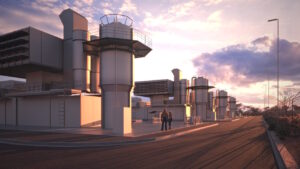With the Olympic games kicking off this week, host country Japan says it is keen to use the event as a platform to promote a vision for a ‘carbon-free future’ – including by fuelling the Olympic flame entirely with renewable hydrogen.
The global sporting event has been heavily impacted by the Covid-19 pandemic, having been delayed by 12 months and will now proceed – despite many local protests – with heavy restrictions on the movement of spectators and virtually no spectators.
The Japanese Olympic Committee, however, is using the event to promote locally developed hydrogen technologies, including the production of renewable hydrogen fuels and the demonstration of zero emission vehicles.
The Olympic flame, which has been making its way around Japan as part of the traditional torch relay since March, has been fuelled by renewable hydrogen. Both the Olympic and Paralympic cauldrons in Tokyo will also be fuelled with the zero emissions gas.
The renewable hydrogen used to fuel the Olympic flame has been produced at a newly built facility in Fukushima, a region that had been devastated by the 2011 Tōhoku earthquake and tsunami and subsequent meltdown at the region’s nuclear power facility.
The Fukushima Hydrogen Energy Research Field was opened in March last year and includes a 10MW electrolyser and a 20MW on site solar farm under a partnership between Toshiba, Tohoku Electric Power and Iwatani Corporation.
The facility will also supply green hydrogen for fuel cell buses and other vehicles used as transport for the Olympics. About 500 Mirai hydrogen fuel cell passenger vehicles and around 100 fuel cell buses will be used to transport athletes and officials around the Olympic precinct.
The Olympic village in Tokyo has been designed to serve as an example of a potential ‘hydrogen city’, with hydrogen also being used to heat water used in the cafeterias, dormitories and training facilities around the village.
“With their immense reach and visibility, the Olympic Games are a great opportunity to demonstrate technologies which can help tackle today’s challenges, such as climate change,” Marie Sallois, director for dorporate and sustainable development at the International Olympic Committee, said. “Tokyo 2020’s showcasing of hydrogen is just one example of how these Games will contribute to this goal.”
After the Olympic games, the athlete’s village will be converted to residential accommodation, with properties to be connected to a supply of renewable hydrogen as an alternative to supplying homes with conventional fossil gas.
The Japanese government has set a target for sales of 800,000 fuel cell vehicles in Japan by 2030 and has already supported the roll-out of 135 public hydrogen refuelling stations.
Iwatani, meanwhile, has also sought to grow its presence into Australia, securing a deal with the Queensland government owned Stanwell Corporation to progress plans for a 3,000MW hydrogen facility in Gladstone.








